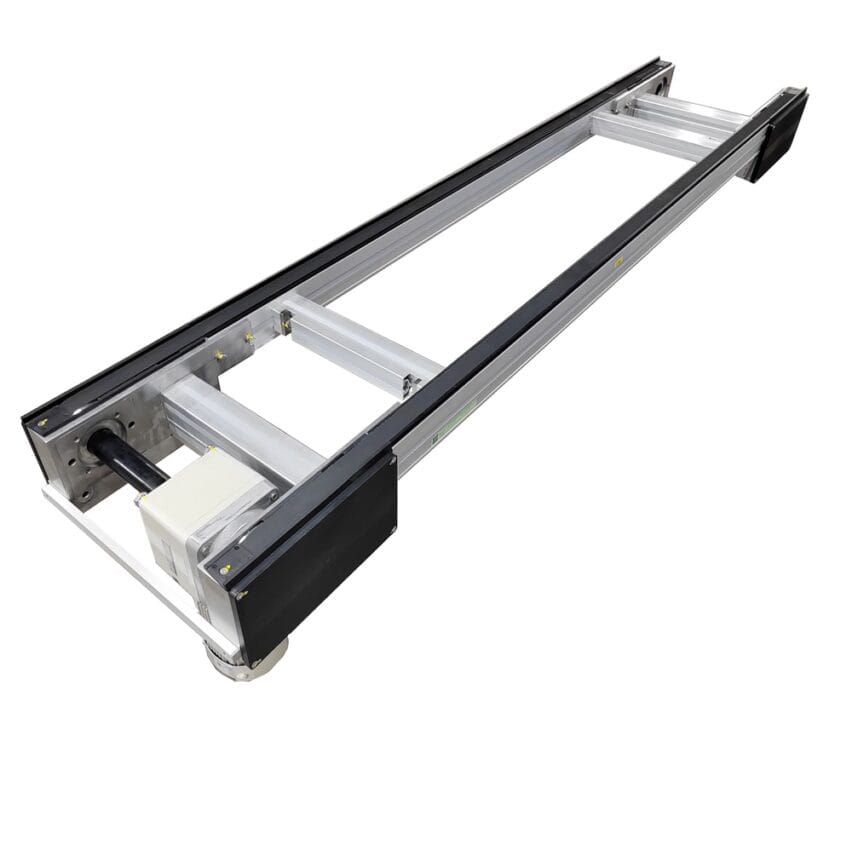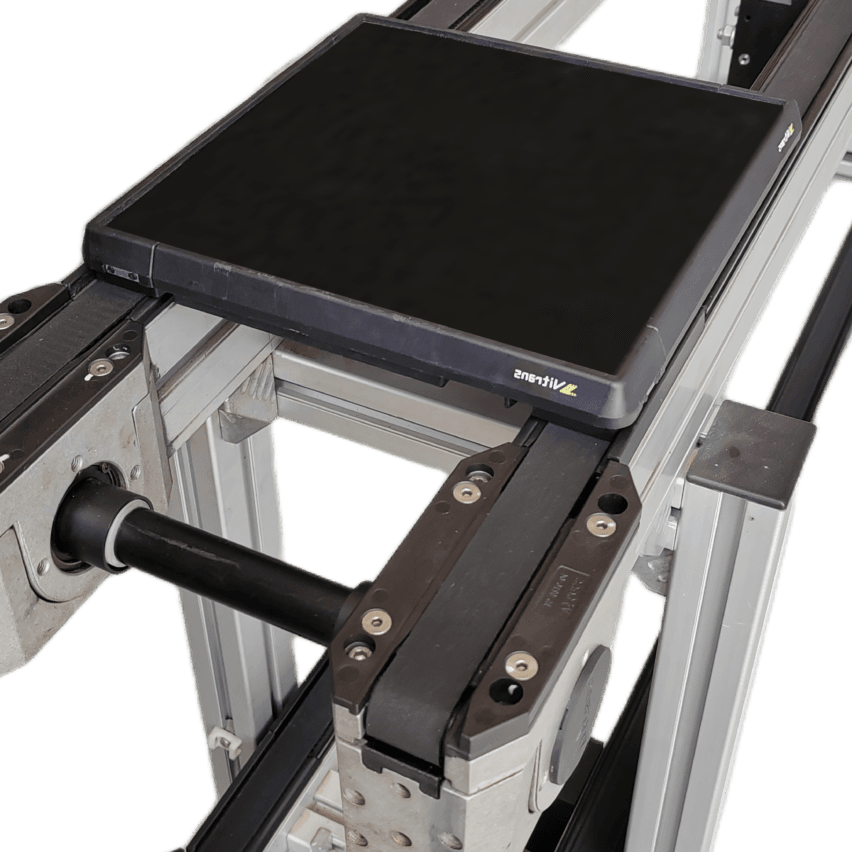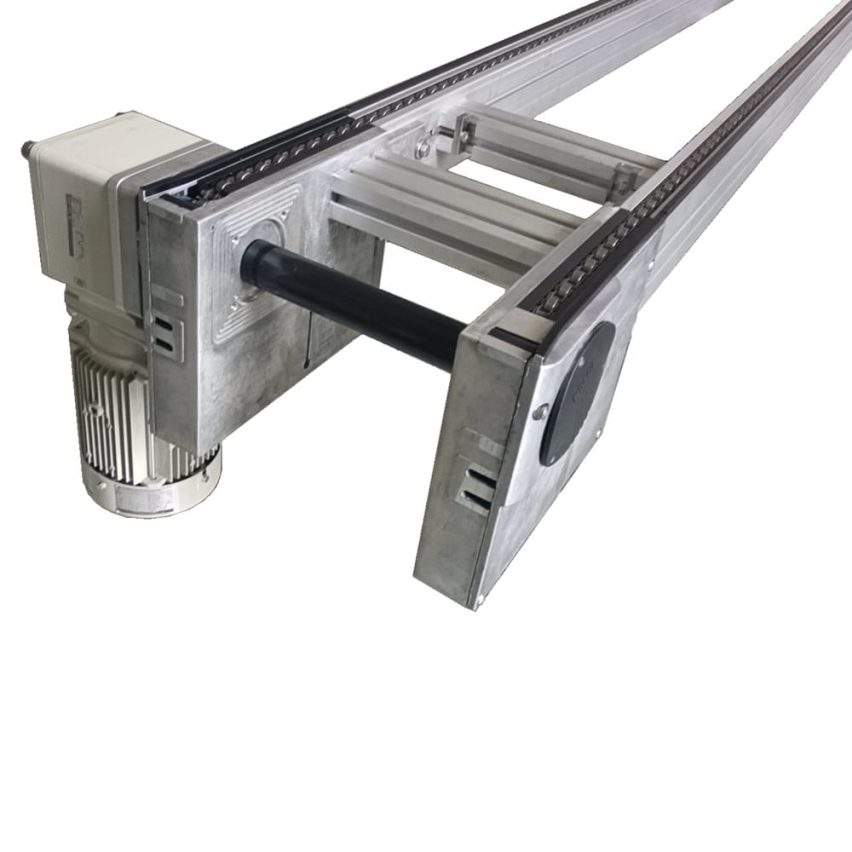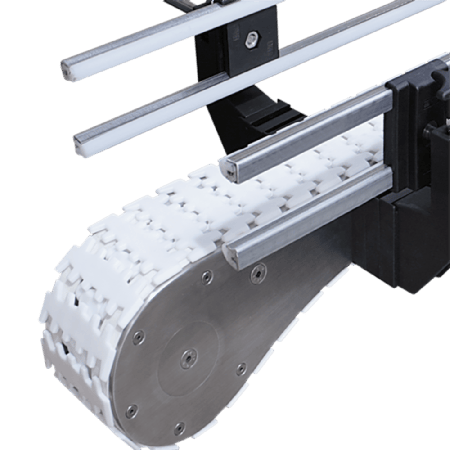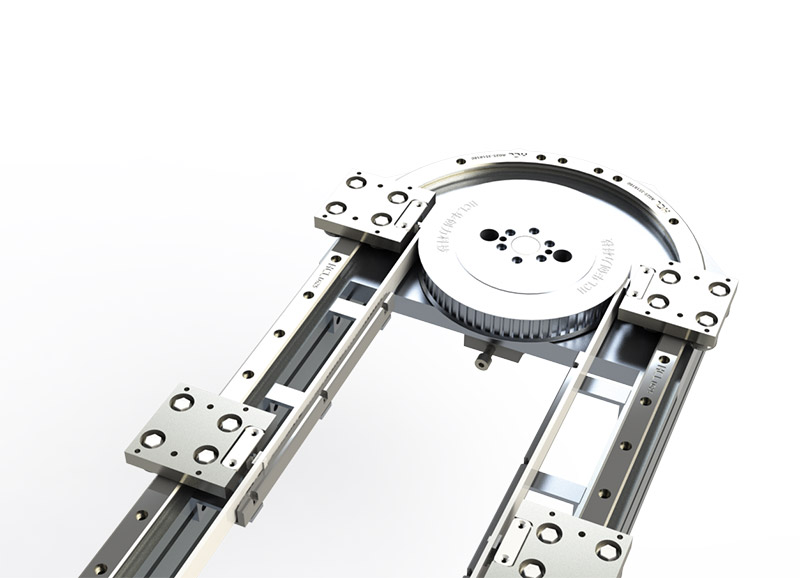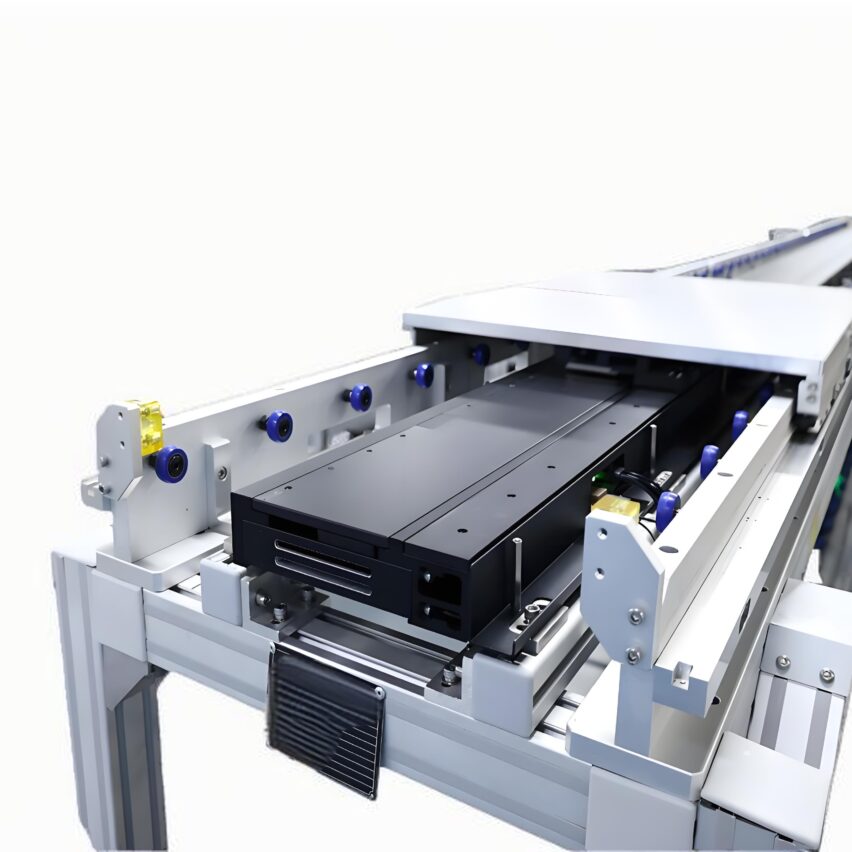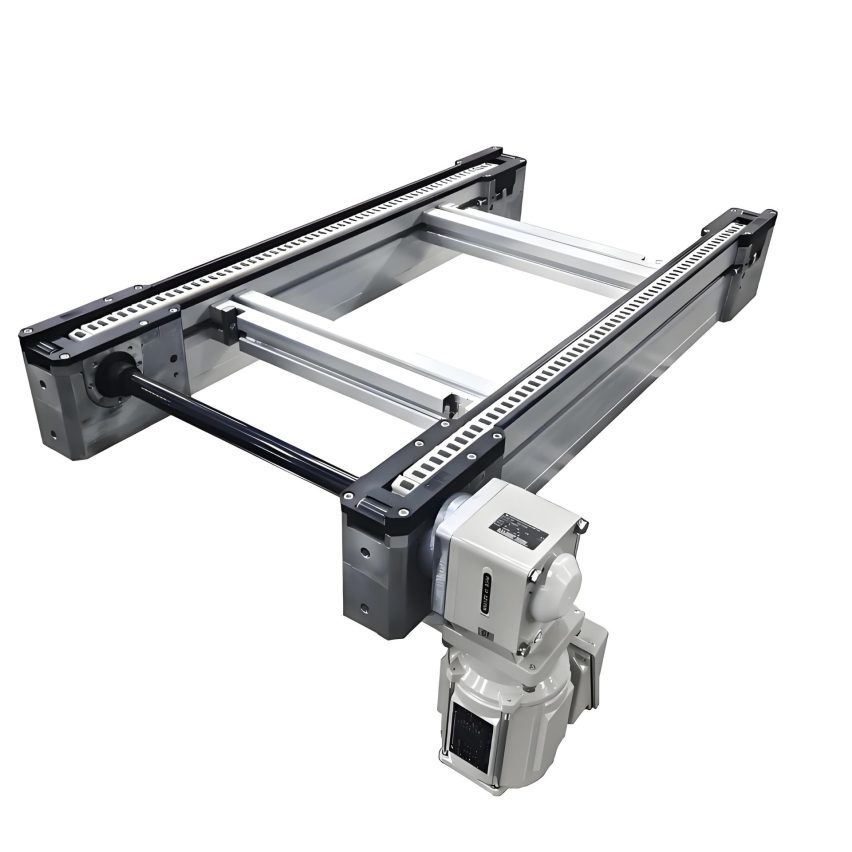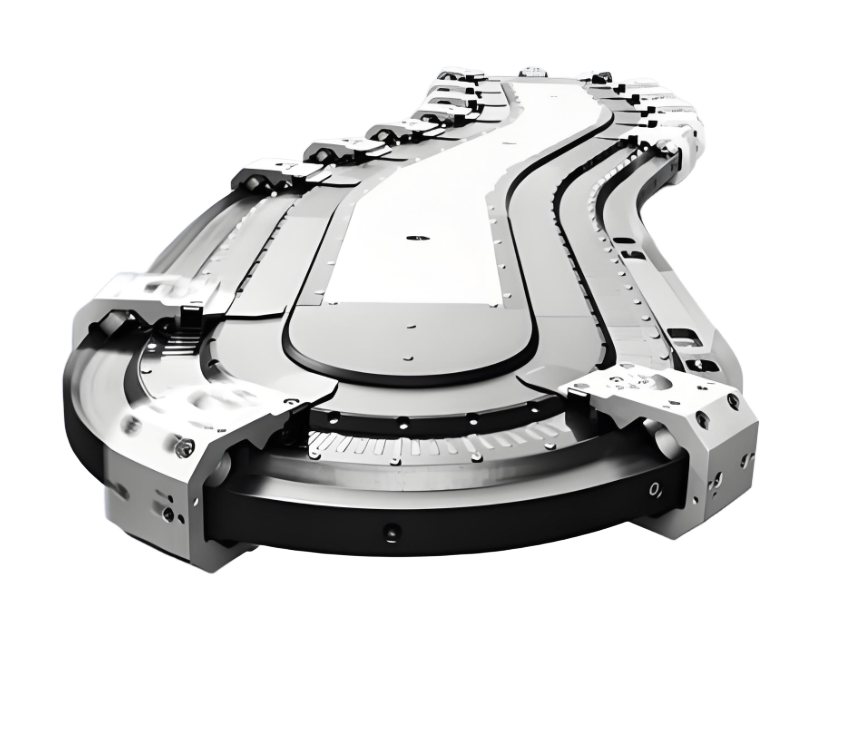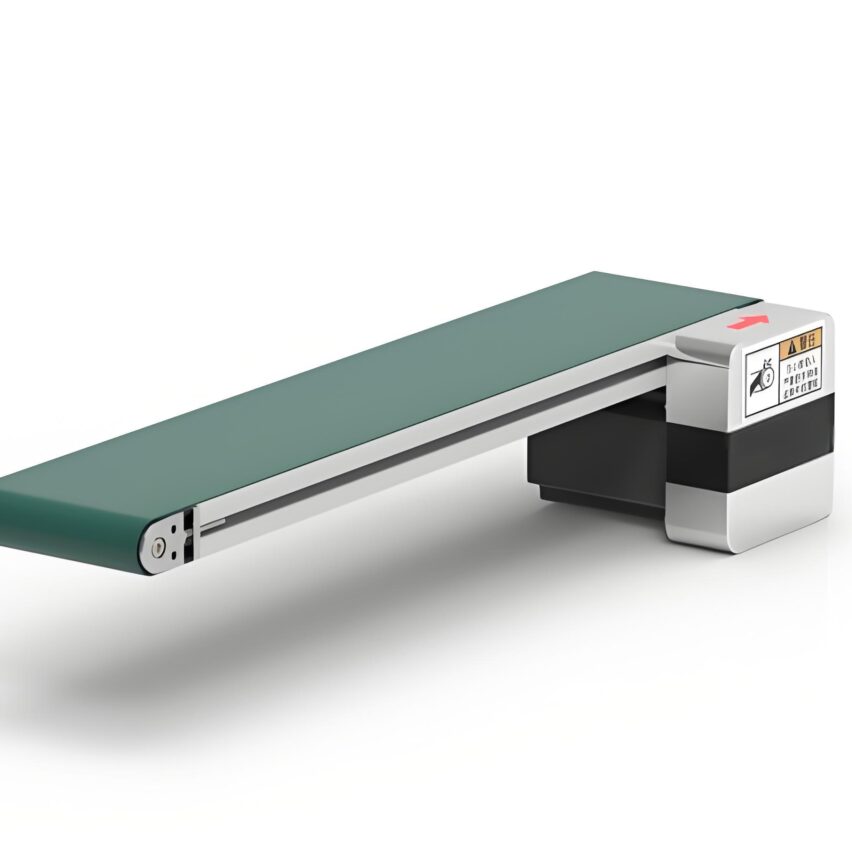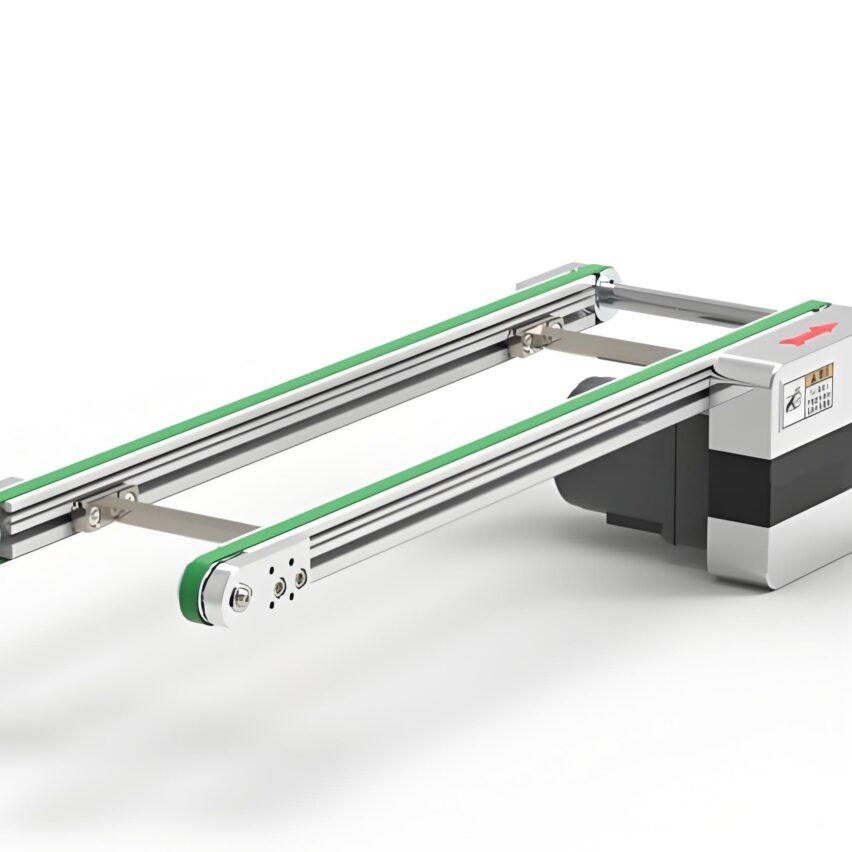## I. The physical core of the multiplier chain: a revolution in efficiency for differential drives
of a multiplier chainSpeed Stacking MechanismIt is the core of its subversion of traditional conveying. When the chain moves at the base speed V₁, the actual speed of the work plate can be up to V total = V₁ × (1 + D/d), where D is the diameter of the roller and d is the diameter of the roller. This design allows material handling speeds to be increased to 2.5-3 times the speed of the chain, but behind it lies a precision engineering challenge:
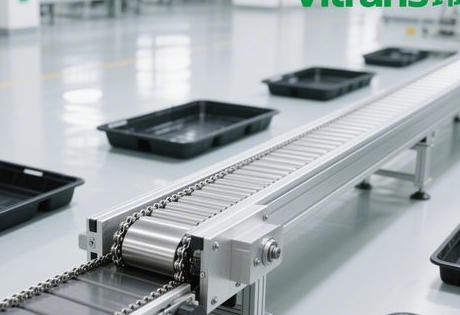
- Friction loss control: Guideway friction causes 8%-15% speed loss, which needs to be compensated by high-precision linear guideways (tolerance ≤ 0.5mm/m) and special lubricants (100°C viscosity ≥ 46mm²/s);
- Dynamic Load AdaptationLight duty chains (engineering plastic rollers) carry 2200kg, heavy duty chains (steel rollers) up to 4000kg, with graded load matching pitches from 25.4mm to 38.1mm;
- Spatial topology optimisation: Curve radius ≥ 3 times the chain pitch, with the guide wheelset to eliminate the risk of skipping the chain, to ensure the speed stability under the complex path.
## II. Intelligent Architecture for Whole Line Integration: From Mechanical Drive to Nerve Centre
Modern multiplier chains have evolvedIoT-enabled collaborative systems, whose intelligent architecture consists of three layers:
### Sensory layer: distributed nerve endings
- Optical positioner(±0.5mm accuracy) Real-time tracking of the position of the tooling board with an error rate of less than 0.01%;
- Tension Monitoring ModuleDynamic adjustment of chain droop (threshold >20% triggers alarm) to prevent jumping teeth;
- Temperature and vibration integrated probePredicts bearing failures and reduces 73% unplanned shutdowns by 200Hz-1kHz band energy rise 23% warning.
### Execution layer: edge-cloud collaboration
Edge PLCs enable millisecond responses:
- S-shaped acceleration and deceleration curves (acceleration ≤ 0.5m/s²) reduce material displacement;
- Three-speed mode switching (0.3m/s start → 1.0m/s run → 1.5m/s return) to adapt to different workstation beats.
Cloud AI, on the other hand, optimises global policies: dynamically adjusting preventive maintenance cycles based on historical data and predicting peak energy consumption to schedule loads.
### Interaction layer: human-computer symbiotic interface
The AR repair system superimposes faulty component information onto the field of view of the engineer's glasses, compressing the mean time to repair (MTTR) from 3.5 hours to 45 minutes. Practice at an automotive plant has shown that the system reduces manual diagnostic errors by 68%.
## III. Practical mapping of industry reconfiguration: from precision electronics to heavy manufacturing
### The "clean artery" of the semiconductor industry.
In the chip packaging workshop, the Speedchain±1mm positioning accuracytogether withStatic protection designAchieve lossless transport of wafer carriers. After adoption by a factory in Suzhou, the wafer breakage rate was reduced from 0.12% to 0.003%, and the annual loss cost was reduced by 8 million RMB.
### A heavy-duty revolution in automotive assembly
Heavy duty doubled speed chain (4000kg load capacity) combined withServo jacking mechanism(Accuracy ±0.1mm), so that the engine block to achieve 360 ° no dead angle assembly:
- Linked with a six-axis robotic arm, the station beat was compressed from 120 seconds to 78 seconds;
- The differential accumulation function reduces buffer section length by 60% and increases line space utilisation by 45%.
### Low Temperature Breakout in Cold Chain Logistics
-20°C environment.Austenitic stainless steel chainstogether withDry Lubrication SystemOvercome the traditional lubrication failure problem. A fresh food warehouse application shows that the sorting efficiency reaches 2.3 times of the traditional roller line, and the manpower cost is reduced by 70%.
## IV. Technological Deep Water and Breakthrough Paths
The current multiplier chain faces two major contradictions:
The game of energy consumption and precision
Slope conveyance requires additional 45% (15° slope) to 90% (30° slope) drive, resulting in a 15-30% drop in energy efficiency ratio. breakthrough solution:
- Gravity Recovery Unit: Conversion of potential energy into electrical energy in the downstream section, with a theoretical recovery of 401 TP3T;
- Carbon Fibre Roller: Weight reduction of 70% and coefficient of friction reduction of 35% (experimental data).
Adaptation bottlenecks in flexible production
Traditional line body modification requires 3-5 days of downtime. Innovative direction:
- Modular quick release rail: Snap-on connections support path reconfiguration within 2 hours;
- Digital twin pre-commissioning: Validate layouts in virtual environments with reduced trial and error costs 90%.
## Exclusive data: mapping the evolution of multiplier chain technology in 2030
According to the Ministry of Industry and Information Technology (MIIT), China's multiplier chain market size will reach87.5 billion(CAGR 7.2%), three major breakout points have emerged:
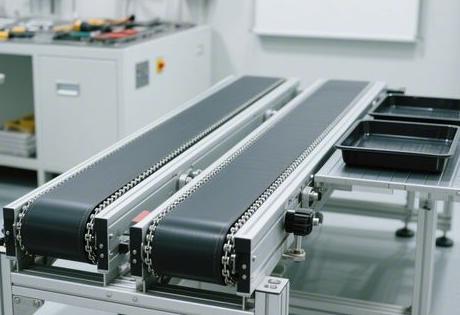
- AI Predictive Maintenance PenetrationRising from 18% to 67%, Overall Equipment Effectiveness (OEE) surpassed 92%;
- Photovoltaic direct drive systemsAccounting for more than 30%, the production line carbon emissions reduced by 41%;
- Safety standards for human-computer collaborationInnovative, force-feedback based emergency stop system (response <0.05 seconds) comes as standard.
(Note: Data based on "2025-2031 China's Speed Conveyor Chain Report")
## Self-questioning: penetrating the essence of technology
Q: Why do automobile factories abandon belt lines in favour of doubler chains?
A: The key is in theHeavy Duty Accuracytogether withcontamination resistance::
- Belt line single point load ≤100kg, accuracy ±5mm; speed chain load 500kg + when the accuracy is still ±1mm;
- Belts tend to deteriorate in oily environments, and the life of the steel rollers of the multiplier chain is extended by 3 times.
Q:How to achieve "zero-collision" conveying for the whole line of speed doubling chain?
A: AdoptionTriple Protection Mechanism::
- The laser range finder preempts obstacles within 0.5 metres and triggers deceleration;
- Contact buffer absorbs impact energy (energy absorption value ≥ 50J);
- Emergency stop system response <0.05 seconds, exceeding the industry standard by 3 times.
Q:Why is Speedchain the "spine" of the smart factory?
A: It assumesMaterial Dispatch HubCharacters:
- Connecting 80% or more production equipment (robotic arms, AGVs, inspection machines);
- Real-time data streams account for 401 TP3T of IoT traffic across the plant, providing core working condition data for the digital twin.

